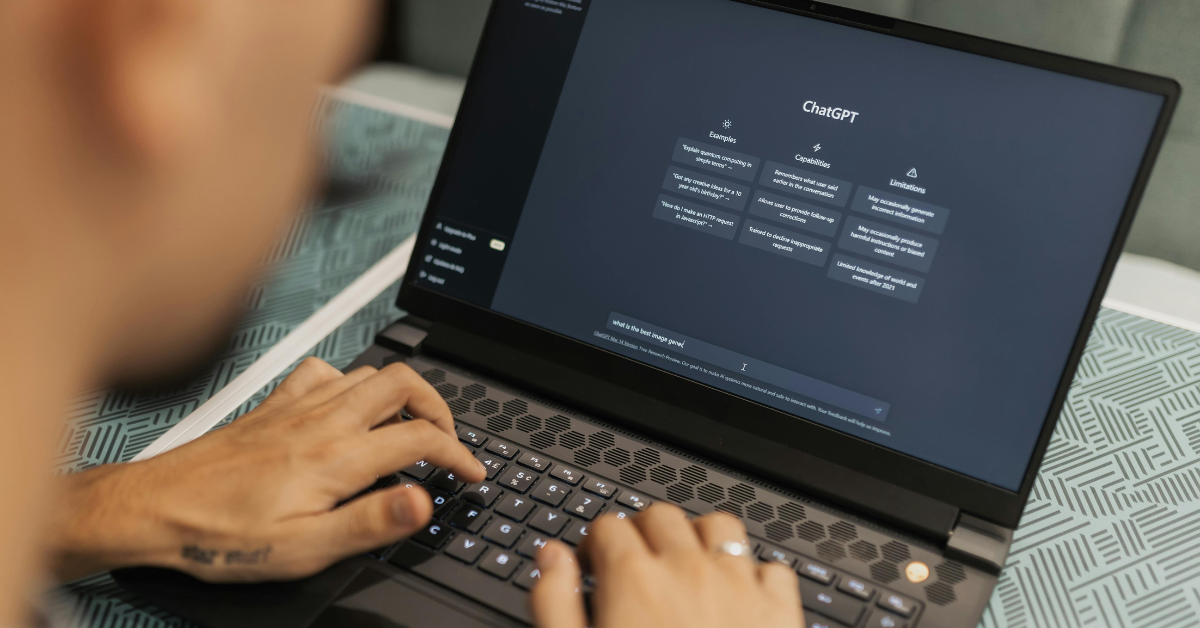So you couldn’t slide through the programming web of AI detection, and now you are under the allegations of submitting AI assignments. You assumed that your career was over because of the tools that first eased you by writing your assignments, then caught you red-handed and left you alone with your professor. I can understand because we are in the same pool at this time.
Artificial Intelligence (AI) can easily mimic humans, and its problem-solving, retro-style approach has brought great convenience to everyone worldwide. It’s developing bangers in IT and computer sciences and assisting in everything worldwide. Whether it’s social sciences, content creation, online methods, research, or medicine, AI plays an enormous role.
I agree that dependency makes things tangible; however, you can change the whole scenario with some precautions and thoughtful approaches. So, stay tuned for the tips.
Table of Contents
- Students & Artificial Intelligence
- Why Do Professors Use AI Detectors In Academia?
- Students & Artificial Intelligence
- Tools Universities Prefer for AI Detection
- Academic Integrity & AI in Academia
- Tips for Slide AI Detection
- Final Command
Students & Artificial Intelligence
The majority of students use AI as a study aid. According to the 2025 survey statistics, 86-93% of students used AI tools like ChatGPT, Gemini, Claude, and Jasper for their assignments. However, only a few would be able to glide through their professors’ hardcore detecting AI devices. It’s for sure that using AI or ChatGPT tools in your academic arena is an excellent approach, but entirely relying on them is a curse to your productivity.
Why Do Professors Use AI Detectors In Academia?
In a world where students love to figure out the easiest ways to complete their assignments, Gen Z academics have extensive research on detecting their tactics. They know several methods of detecting the illegitimate use of AI in their students’ assignments.
Numerous methods exist, such as contrasting their previous and current work, using advanced AI detection tools, and manual checking. Some also find it easy to detect because of the phrase choice and lack of analysis. Even the contrast in tone and complexity can make one suspicious of the excessive use of AI.
It is AI’s time, and we all know that everyone is utilizing it wherever they can. So what’s the purpose of using these detections and not allowing the use of tools made for our ease? The reason behind this strict approach is the productive nourishment of the generations. Although these tools are for ease, we are the ones who made them. If we depend entirely on these, how can we establish or develop something else in the future?
Because of the extensive use of these tools, we are losing our argumentative abilities, developing a habit of generalized overview, and fading the system of in-depth research and analysis. It is questioning genuineness, academic integrity, fairness, and accuracy.
Tools Universities Prefer for AI Detection
Professors worldwide are using tools like Turnitin, Winston AI, GPTZero, and Originality.ai to detect students’ homework and assignments and verify plagiarism. These excellent software programs are trained to recognize each word, sentence, tone, citation, syntax, diction, punctuation, creativity, and semantics and give a percentage of it.
Numerous websites and detectors are used to detect plagiarism, fabricated citations, and other issues. University management uses a combination of traditional and modern tools for detection. Some of them are explained below.
AI Detecting Tools
Search engines are loaded with tools like Turnitin, GPTZero, Originality.AI, Copyleaks, Winston AI, ZeroGPT, Copyscape, AI Content Detector, and many more.
- Turnitin– This tool is used by thousands of people and is excellent for plagiarism checking. It has also introduced an AI detector to assist professors. Although it relies on an older technique for identifying plagiarism, it remains widely used due to its accuracy, even when the text has been paraphrased.
- GPTZero– With 10 million users and 99% accuracy, it is famous for checking whether large models like ChatGPT write the text. Released in January 2023 by a student, it is one of the most excellent alternatives for detection. Its strength of preliminary checks is also known for its Burstiness and Perplexity.
- Winston AI– is a leading text detection tool with exceptional detection accuracy. It has received some amazing reviews, which obviously contributes to its popularity. With just three steps involved, it can be easily used by millions to detect documents in the form of .docx, .png, and .jpg.
- Originality.AI- is one of the latest methods used for plagiarism checking. It provides us with a whole set of tools, including AI, Plagiarism, Fact, and Readability Checkers, to facilitate Writers, Publishers, Copy Editors, Website Owners, and Content Marketers and make their work easy and fun.
| Tools | Reported Accuracy | Strengths |
| Turnitin | 90 to 95% | AI Detection is best for academic writings |
| GPTZero | 75% | Best for the analysis of AI-generated essays |
| Originality. AI | 94 to 98% | Analysis with sentence-level breakdown |
| Winston AI | 75% | Best at PDFs, OCR, and documents |
Citation Verification
Another method for checking detection is reference verification. It ensures the accuracy and authenticity of the sources and is used to detect the AI hallucination(a tool that generates non-existent sources) that students often adopt.
Contrasting Writing Style
Professors know their students’ compatibility level and can highlight the false. The red flags professors often look for are writing styles, sentence structure, generalized tone, argumentative analysis, and the unique blend of individuality and humanity.
Other methods include Plagiarism software, database comparison, students’ direct engagement, repetitive analysis, and argumentative analysis between the professor and the alums.
Academic Integrity & AI in Academia
Every student’s foremost priority is maintaining academic integrity. Using AI tools to refine an essay or task isn’t an illegitimate act, but copying is out of the league. Transparency is the key. Our focus should be on learning, not finding shortcuts for the sake of grades.
According to a report analysis, around 15% of Canadian students plagiarize their works without referencing the sources, 16% of U.S. students do the same, and almost 90% of students get exceptional grades in their assignments by using tools like ChatGPT, Gemini, Quillbot, Grammarly, Notion AI, Writesonic, Claude, Compose AI, JetBrains Grazie, and many more.
Tips for Slide AI Detection
I think that using AI is a smart choice. It can give you ideas and generate content that resonates with and maintains the standards of your university assignments. But taking it for granted and completely depending on it is your academic downfall. So, instead of copying, try to add techniques that will help you grind the detection tools.
Well, there are numerous and effective ways of sliding AI detections. Here are some tips that will definitely work.
- Sentence structure & Sentence length
- Use active voice
- Diction choice
- In-depth analysis
- Statistical analysis
- Use of idioms and transitional words
- Rhetorical questions
- You can use humor, sarcasm, and jargon
- Manual citations
- Argumentative or informal tone
- Avoid repetition
- You can use AI humanizers
Final Command
AI is now a huge academic tool, and we can not erase its use from our lives just like that. So we all must use it for positive purposes so that its impact makes a cheering change in our lives and does not cast a shadow by any means.
Taking help from AI is encouraging yet fruitful, but just relying on it to do our whole tasks for us is not great work. This not only has a destructive impact on intelligence but also on the use of our brains and makes us dependent on others for every small task, which is scary as it is going to drain all of our productivity.





